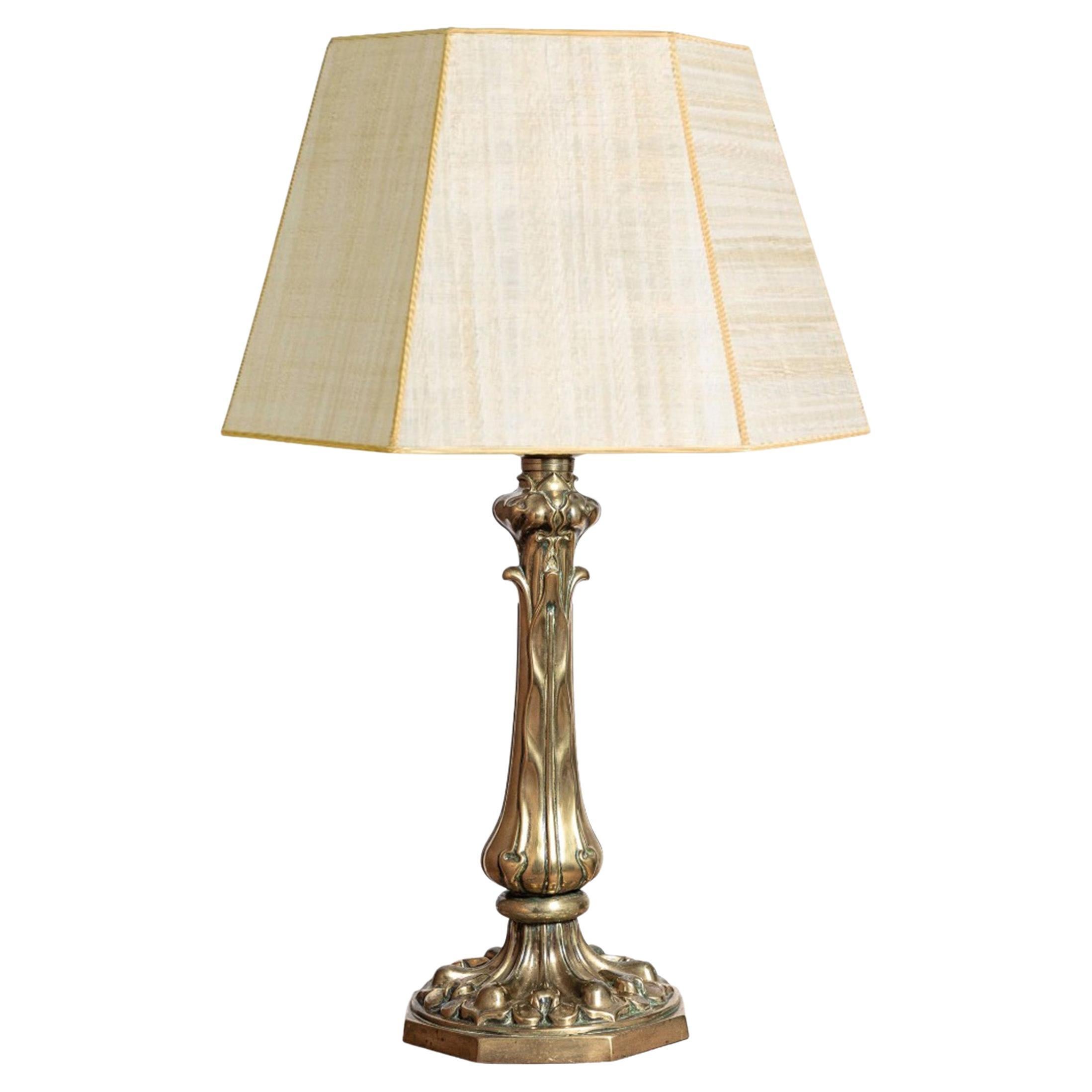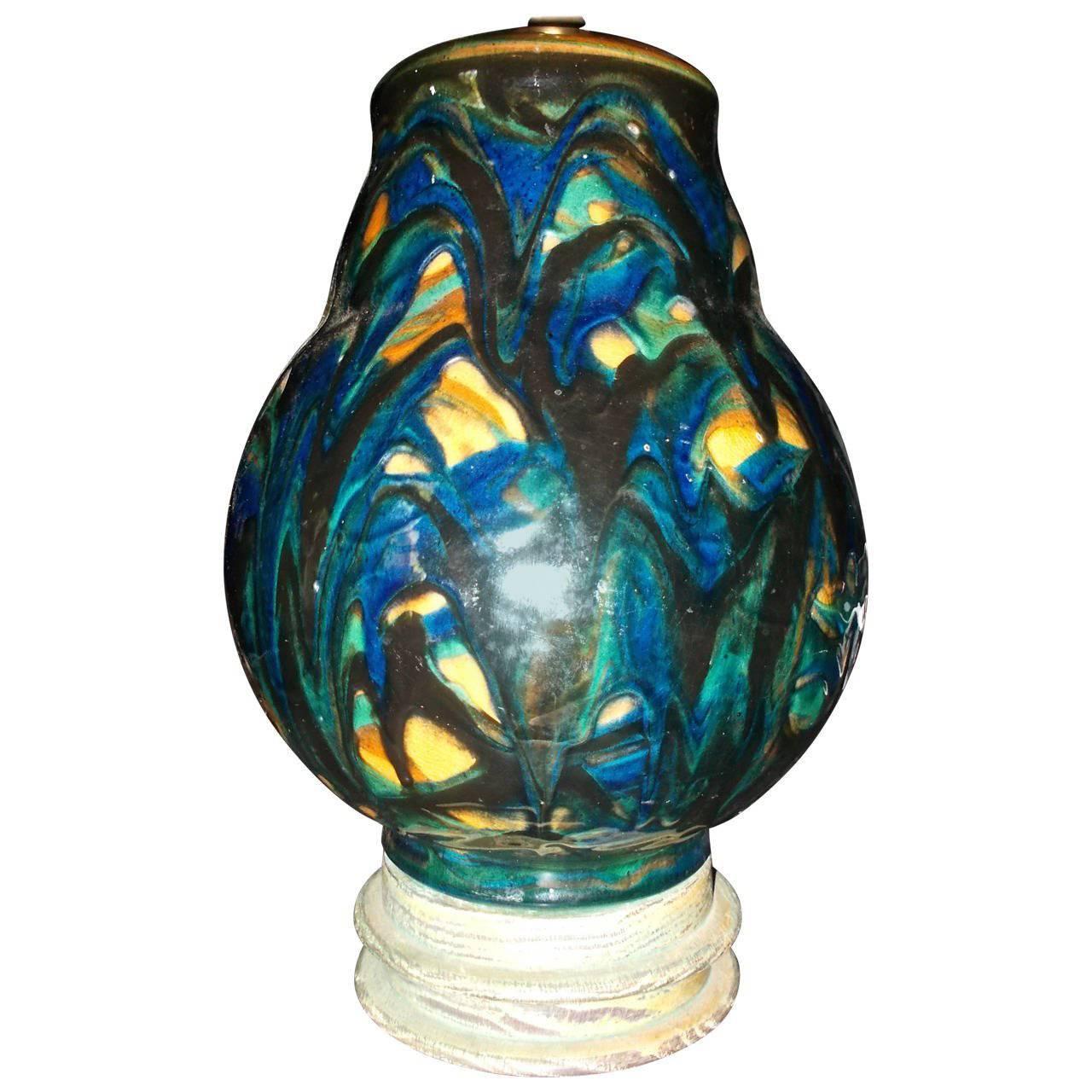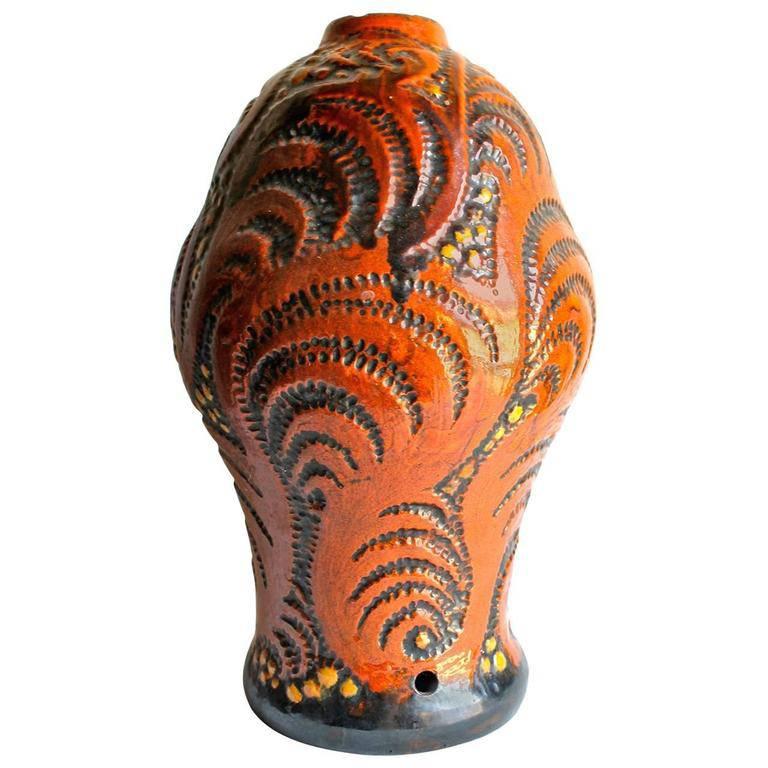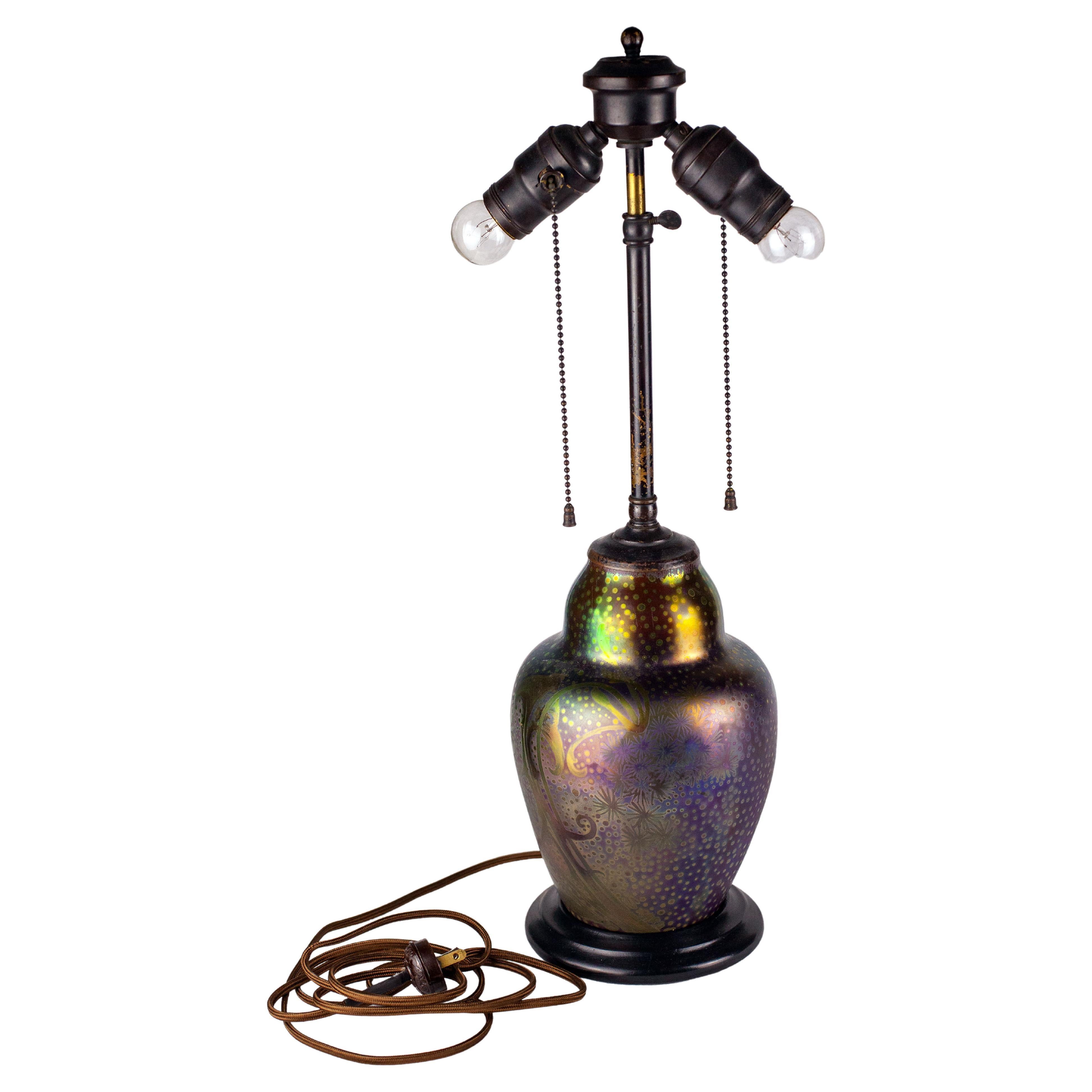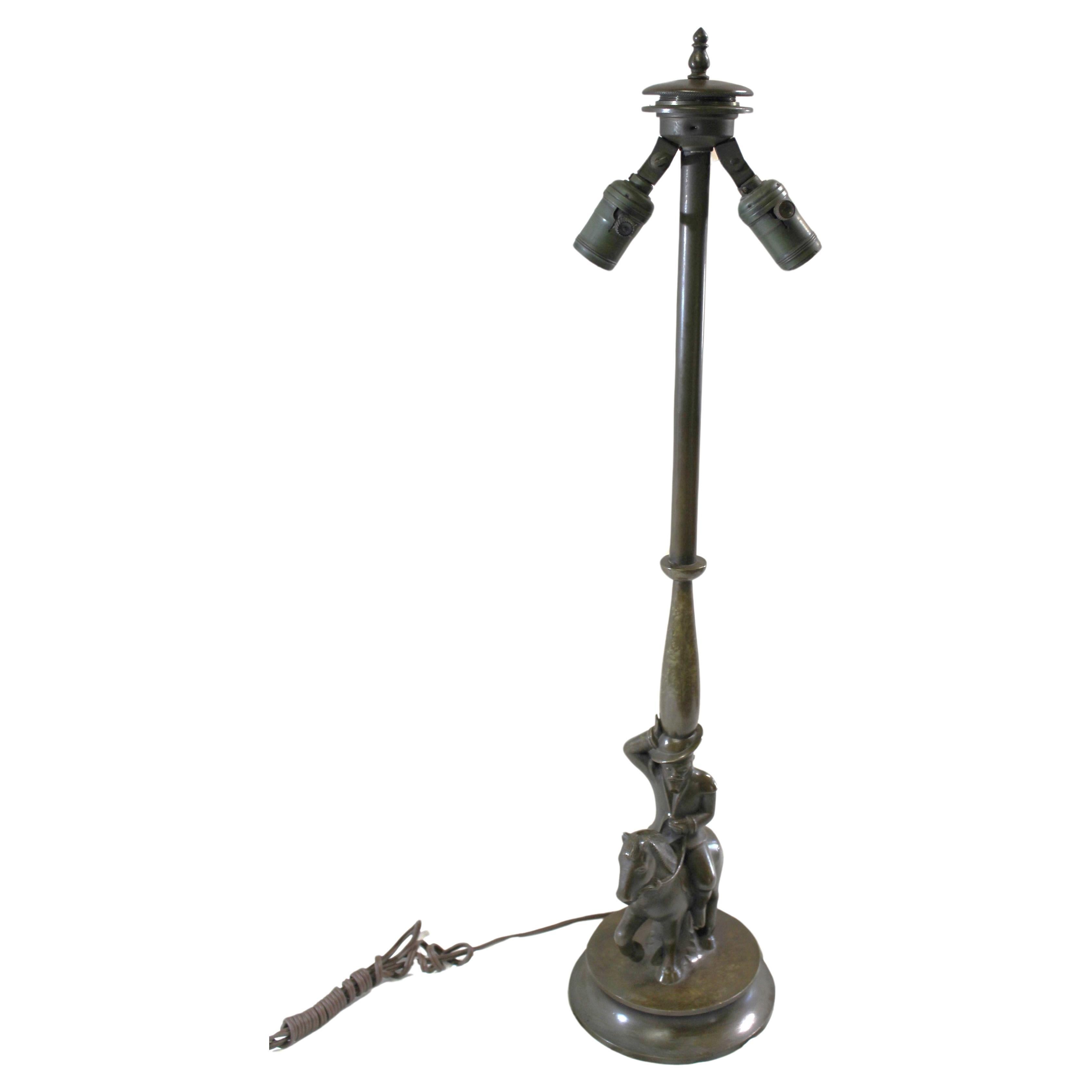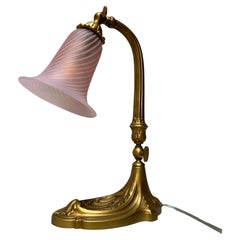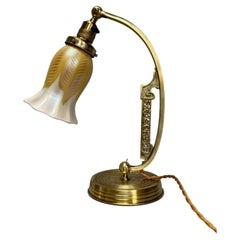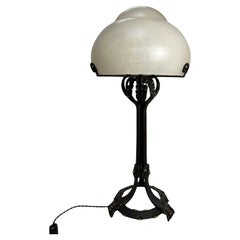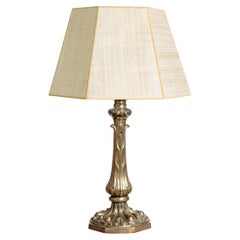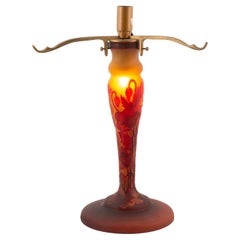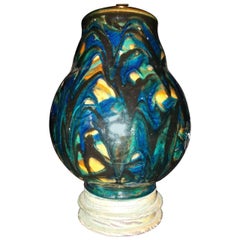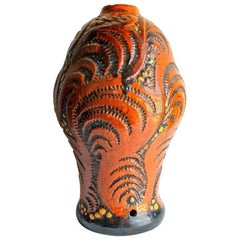Items Similar to Art Nouveau Lamp Base Model Hearts
Video Loading
Want more images or videos?
Request additional images or videos from the seller
1 of 15
Art Nouveau Lamp Base Model Hearts
About the Item
Art nouveau lamp circa 1910.
Bronze and brown patinated brass base, heart model.
Uraline tulip in opalescent glass.
The lamp is fully electrified and in perfect condition.
Total height: 44 cm
Width: 32 cm
Length: 16 cm
Weight: 1.5 Kg
- Dimensions:Height: 7.49 in (19 cm)Width: 12.6 in (32 cm)Depth: 6.3 in (16 cm)
- Power Source:Hardwired
- Voltage:110-150v,220-240v
- Lampshade:Included
- Style:Art Nouveau (Of the Period)
- Materials and Techniques:
- Place of Origin:
- Period:1910-1919
- Date of Manufacture:1910
- Condition:
- Seller Location:NANTES, FR
- Reference Number:1stDibs: LU7403242740482
About the Seller
No Reviews Yet
Vetted Professional Seller
Every seller passes strict standards for authenticity and reliability
1stDibs seller since 2022
39 sales on 1stDibs
Typical response time: 2 hours
- ShippingRetrieving quote...Shipping from: NANTES, France
- Return Policy
Authenticity Guarantee
In the unlikely event there’s an issue with an item’s authenticity, contact us within 1 year for a full refund. DetailsMoney-Back Guarantee
If your item is not as described, is damaged in transit, or does not arrive, contact us within 7 days for a full refund. Details24-Hour Cancellation
You have a 24-hour grace period in which to reconsider your purchase, with no questions asked.Vetted Professional Sellers
Our world-class sellers must adhere to strict standards for service and quality, maintaining the integrity of our listings.Price-Match Guarantee
If you find that a seller listed the same item for a lower price elsewhere, we’ll match it.Trusted Global Delivery
Our best-in-class carrier network provides specialized shipping options worldwide, including custom delivery.More From This Seller
View AllArt Nouveau Desk Lamp
Located in NANTES, FR
Desk lamp in gilded spelter circa 1910. Tulip tilt adjustment possible.
Tulip in opalescent glass.
Electrified, B22 socket.
in perfect condition.
Height: 34 cm
Width: 25 cm
Depth: 1...
Category
Early 20th Century French Art Nouveau Table Lamps
Materials
Spelter
$1,396
Majorelle Art Nouveau Lamp
By Atelier Majorelle
Located in NANTES, FR
Majorelle Art Nouveau lamp
Large lamp around 1900 foot in gilded bronze and lampshade in alabaster.
Very good quality of bronze and pretty floral m...
Category
Early 20th Century French Art Nouveau Table Lamps
Materials
Alabaster, Bronze
Quezal Art Nouveau Lamp
By Quezal
Located in NANTES, FR
Art nouveau lamp circa 1910.
Brass and copper base.
Iridescent glass tulip signed Quezal.
In perfect condition and electrified.
Total height: 38.5 cm
Base diameter: 15.5 cm
Width: 30 cm
Quezal Art Glass
Quezal Art Glass – The Journal of Antiques and Collectibles – April 2003
By Malcolm Mac Neil
Some of the most beautiful and alluring art glass made in America during the early part of the 20th Century was made by the Quezal Art Glass and Decorating Company. Often in the shape of blossoming lilies with brilliant gold interiors and colorfully decorated with floral and other motifs inspired by nature, Quezal art glass ranks right alongside the iridescent glass of Louis Comfort Tiffany and Frederick Carder. Quezal artisans created an extensive range of decorative and useful items, including vases, compotes, finger bowls, open salts, candle holders, and shades for lighting fixtures, which are equivalent in terms of beauty and quality of craftsmanship to Tiffany’s Favrile and Carder’s Aurene glass. In recent years, glass collectors have discovered anew the special charms and appeal of Quezal art glass, and collector desirability for this lovely glassware has increased dramatically.
The Quezal Art Glass and Decorating Company was incorporated a century ago, on March 27, 1902. It was founded by Martin Bach, Sr., Thomas Johnson, Nicholas Bach, Lena Scholtz, and Adolph Demuth. The factory was located on the corner of Fresh Pond Road and Metropolitan Avenue in Maspeth, Queens, New York. In October 1902, the trademark “Quezal” was successfully registered. By 1904, roughly fifty glassworkers were employed at the works.
Martin Bach, Sr. was the president, proprietor, and guiding force behind this successful company. Born in 1862 in Alsace-Lorraine to German parents, he emigrated to the United States in 1891. Before his emigration, Bach worked in Saint-Louis, France, at the Saint-Louis Glass Factory. After Bach arrived in this country, he was hired by Louis C. Tiffany as the latter’s first batch-mixer or chemist at the newly established Tiffany Glass and Decorating Company, in Corona, Queens. After a period of about eight years, Bach left Tiffany and established his own glassworks. By this time, Bach had already started his small family. He and his German-born wife, Anne-Marie Geisser, whom he married in the fall of 1889, in Paris, France, had three children. Two daughters, Jennie and Louise, were born in France and a son, Martin, Jr., was born in Corona.
Bach was assisted by Thomas Johnson, an English immigrant, and Maurice Kelly, a native of Corona, both of whom were gaffers or master glassblowers. Johnson and Kelly helped pave the way for Quezal’s early accomplishments and later recognition. Thomas Johnson, like Bach, was a founding member and also previously employed by Louis C. Tiffany. Johnson’s association with Quezal, however, was relatively short lived. Around 1907, Johnson left for Somerville, Massachusetts, where he became involved in making Kew Blas glass, under William S. Blake at the Union Glass Company. Maurice Kelly’s tenure with Quezal was also brief. Kelly worked at Quezal from January 1902 until July 1904, but by November 1904, he was making Favrile glass at Tiffany Furnaces, where he would happily remain until 1918.
To this day, the belief still exists that there once existed a man named Quezal, who worked for Louis C. Tiffany, and it is after him that Quezal glass is named. In truth, however, the founders of the Quezal Art Glass and Decorating Company named the company and its products after one of the world’s most beautiful birds, the elusive and rare quetzal, which dwells in the treetops of the remote tropical forests of Central America. A rare company promotional brochure provides a vivid description of the quetzal: Of all the birds of the America’s, it is the most gorgeous. No more splendid sight is to be seen in all the world than a quezal, flying like a darting flame through the depths of a Central American forest. Its back is of a brilliant metallic green, so vivid it shines even in the twilight of the woods like a great emerald and its breast is a crimson so deep and bright that every motion of the wonderful creature is a flashing of rubies among the trees and giant creepers. It bears a true golden crown upon its head – a helmet of bright yellow and green, shaped just as the helmet of old Aztec kings were shaped. Its tail is composed of lacelike plumes, extending more than two and one-half feet beyond its body.
The quezal was certainly an appropriate designation for the company’s resplendent glassware. One of the most prized characteristics of Quezal art glass is the shimmering and dazzling brilliance reflected in the iridescent surfaces on the interior as well as exterior of the glass. The radiant rainbow colors in metallic hues, including gold, purple, blue, green, and pink, to name only a few, were certainly inspired by the quetzal and its feathers. Not surprisingly, lustrous feathers, in shades of opal, gold, emerald, and blue, are among the most common decorative motifs encountered on Quezal glass.
The enduring hallmark of Quezal art glass is its unique expression of the Art Nouveau style, based on organic shapes and naturalistic motifs coupled with technical perfection in the execution. Vases, compotes, drinking vessels, and shades for lighting fixtures were often fashioned to resemble flowers such as crocuses, tulips, calla lilies, casablanca lilies, and jack-in-the-pulpits. Variously colored inlaid threads of glass, pulled and twisted by hooks, simulate naturalistic floral and leaf patterns, lily pads, clover leafs, and vines. Opal, gold, and green colors prevail and the glass is generally opaque. Red is the rarest color of all. Compared with Tiffany’s Favrile glass, the crisp, vivid, and colorful decoration of Quezal art glass is distinctively precise, symmetrical, and restrained.
Other Quezal wares recall shapes and styles favored in ancient Egypt, Persia, Greece, and Rome, as well as the Italian Renaissance and the Georgian period in England. This is especially true of classic-shaped vases and bowls of translucent amber glass, which have a single surface color such as iridescent gold or blue. Still, others were inspired by traditional Chinese and Japanese forms.
The Gorham Manufacturing Company in Providence, Rhode Island, and the Alvin Silver Manufacturing Company in Sag Harbor, Long Island, purchased Quezal art glass, which they in turn embellished in their shops with silver overlay decoration in the fashionable Art Nouveau style and later resold. Gorham’s silver overlay designs mostly include stylized floral motifs. Alvin’s silver designs are wonderfully organic. One sumptuous design is of a group of sinuous iris blossoms with carefully articulated petals surrounded by attenuated meandering vines. Collectors should note that not all silver-deposit pieces are marked with a maker’s mark since the silversmith had to be quite careful not to damage the glass underneath.
A rare 1907 retail catalog survives from Bailey, Banks, and Biddle Company, a luxury goods retailer in Philadelphia, which reveals original retail prices of Quezal art glass. A surprising revelation provided by this catalog is that Quezal art glass was nearly twice as expensive as comparable French imported glass made by such renowned firms as Gallé and Daum. Hock glasses, a stemmed glass used primarily for drinking German white wine, were sold by the dozen and retailed between $50 and $75. Fingerbowls were also sold by the dozen and retailed between $50 and $100. These high retail prices were nearly the same as those charged for Tiffany’s Favrile glass, and suggest Quezal art glass was also marketed towards the high-end or luxury market.
Electricity was a brand new invention in the late 1800s and American glass manufacturers developed novel approaches for concealing the electric light bulb, which was rather harsh to the eye and perhaps unflattering to the domestic interior. Tiffany, Steuben, and Quezal responded to this need with the most extraordinary and beautiful art-glass shades, all of which were hand-made and exquisitely fashioned. Many other companies also made art glass shades for table and floor lamps, electroliers, hallway fixtures, and wall sconces, but it was Quezal that excelled in this area and was the most prolific.
Quezal art glass shades were available in an infinite variety of shapes, sizes, colors, and decorations. Some shades are formed and decorated as lilies while others are bell-shaped and have ribbed or textured decoration. Rims are usually plain but sometimes are notched or ruffled. Common motifs include feather or hooked feather, leaf and vine, applied flowers, drape, fishnet, King Tut, and spider webbing. The workmanship shown on most Quezal shades...
Category
Vintage 1910s French Art Nouveau Table Lamps
Materials
Brass, Copper
$3,257
Majorelle Spectacular Art Nouveau Lamp
By Atelier Majorelle
Located in NANTES, FR
Ateliers Majorelle art nouveau lamp circa 1905.
Wrought iron base with bronze applications.
Alabaster shell.
Electrified lamp in perfect condition.
Total height: 72.5 cm
Base diamet...
Category
Early 20th Century French Art Nouveau Table Lamps
Materials
Alabaster, Bronze, Wrought Iron
Art Nouveau Lamp Attributed to Majorelle
By Atelier Majorelle
Located in NANTES, FR
Art nouveau lamp circa 1900.
Gilded bronze, alabaster shells.
Electrified and in perfect condition.
Height: 44 cm
Shell diameter: 22 cm
Weight: 4.5 kg
French cabinetmaker and desig...
Category
Early 20th Century French Art Nouveau Table Lamps
Materials
Alabaster, Bronze
Wmf Art Nouveau Lamp Night Light
By WMF Württembergische Metallwarenfabrik
Located in NANTES, FR
Art Nouveau night light around 1900.
Silver metal and glass cabochons.
Attributed to WMF.
Electrified and in very good condition
Width: 17 cm
Height: 28 cm
Depth: 14,5 cm
Weight: 1,3 Kg
WMF was originally called Metallwarenfabrik Straub & Schweizer. In 1880, Metallwarenfabrik Straub & Schweizer merged with another German company and took the name of Württembergische Metallwarenfabrik, then WMF acquired the Polish metalworks Plewkiewicz of Warsaw in 1886, which became a subsidiary of WMF around 1900. In 1900, WMF acquired Albert Köhler, a famous Austrian ironwork company. Then, in 1905, WMF acquired Orivit, a company known for its Jugendstil (German equivalent of Art Nouveau) pewter fabrications, followed a year later by the purchase of Kunstgewerbliche Metallwarenfabrik Orion, another German metal fabrication company. .
During World War I, the WMF was responsible for producing weapons for the German military and had certified to the Allied Control Commission that the tools used to produce these weapons had been destroyed. However, after Hitler's call for rearmament, the company, then under the control of Hugo Debach, immediately resumed producing weapons. Debach died shortly thereafter. From 1940, WMF began to make increasing use of forced labor from Soviet POWs in surrounding camps, with these eventually accounting for a third of the company's workforce. The WMF also founded its own concentration camp in 1944 to detain and force over 900 Hungarian Jewish women...
Category
Early 20th Century French Art Nouveau Table Lamps
Materials
Silver Plate
You May Also Like
Art Nouveau Brass Lamp Base
Located in London, GB
An Art Nouveau brass oil lamp base converted for electricity.
Late 19th Century. Very good original condition.
Category
Antique Early 19th Century English Art Nouveau Table Lamps
Materials
Brass
Table lamp base. Glass, metal. 20th century, based on Art Nouveau models.
Located in Madrid, ES
Table lamp base. Glass, metal. 20th century, after Art Nouveau models.
Table lamp base made of colored glass reminiscent of models by Emile Gallé, featuring a leaf and flower decor...
Category
20th Century European Other Table Lamps
Materials
Other
Hermann August Kahler Art Nouveau Ceramic Lamp Base
By Herman August Kähler
Located in Sharon, CT
Beautiful and very loosely glazed in blue green and black ceramic lamp base 12.5" high (ceramic itself 10" high). Interesting wooden base with remain...
Category
Early 20th Century Danish Art Nouveau Table Lamps
Materials
Ceramic
Michael Andersen & Sons Ceramic Art Nouveau Lamp Base
By Michael Andersen & Son
Located in Sharon, CT
Early vase form made as a lamp base.
Category
Antique 1890s Danish Art Nouveau Table Lamps
Materials
Ceramic
Art Nouveau Iridescent Earthenware Weller Sicard Lamp Base
By Jacques Sicard
Located in Bloomfield Hills, MI
This stunning lamp base is a converted Art Nouveau Weller Sicard vase. It is a prime example of Sicard's trademark metallic lustre glaze.
One of the p...
Category
Antique Early 1900s American Art Nouveau Table Lamps
Materials
Pottery
Antique Lamp Base , Bronze , Nouveau or Deco
Located in Los Angeles, CA
A fine early cast bronze of what looks like ( Don Quixote ) on a Donkey . The base has all original hardware ,double adjustable sockets and the shade cap . Has good wiring and looks ...
Category
Vintage 1930s French Art Nouveau Table Lamps
Materials
Bronze
Recently Viewed
View AllMore Ways To Browse
Marble Rectangle Table
Marble Top Chinese Table
Marble Top Side Table With Drawers
Metal Heart Chair
Mid Century Walnut Dining Table With Leaves
Milo Baughman White
Mission Oak Dining Chair
Modernist Glass Bowl
Modular Sofa Blue
Nail Trim Chair
Napoleon Iii Fabric
Orange Chinoiserie
Orange Console Table
Oval Wreath
Pair Of Chic Side Table
Pattern Shag Rug
Pebble Coffee Table
Red Wine 1960 Vintage
